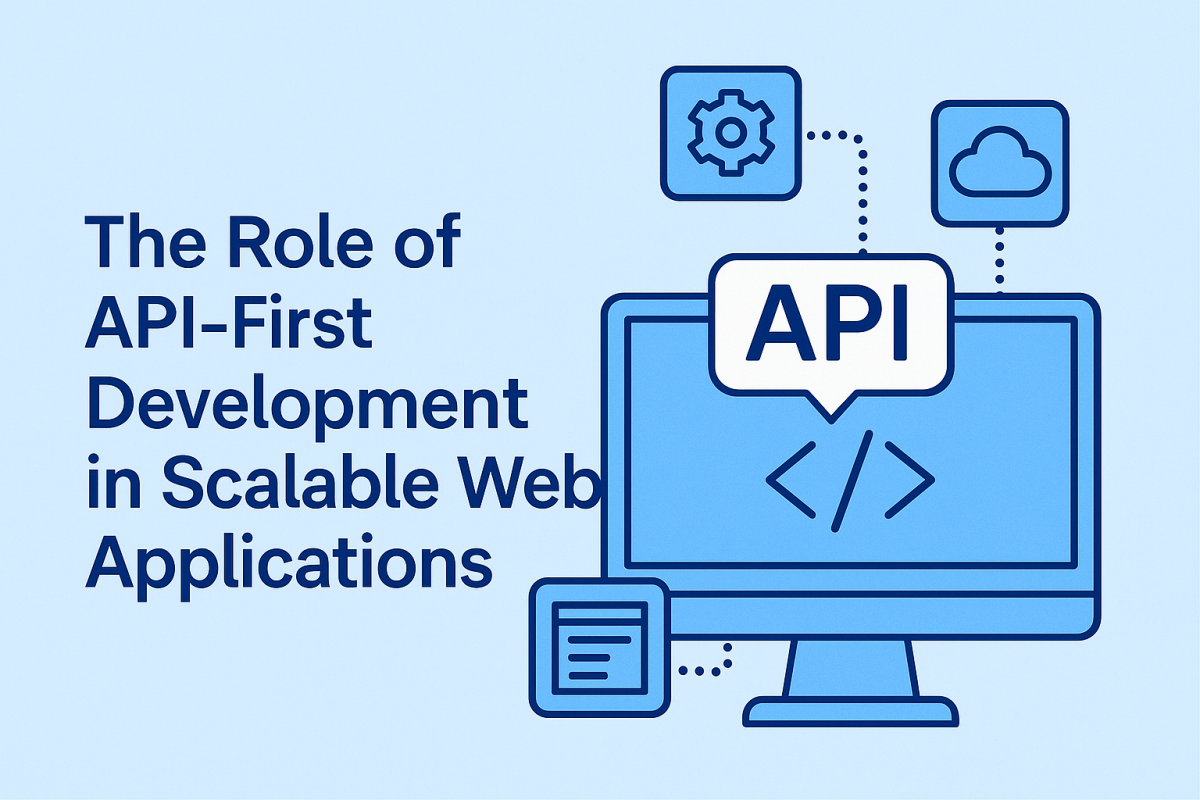Ever struggled with a slow, clunky app or a website that can’t keep up with new features? As web applications grow, scalability and flexibility become critical challenges. API-first development offers a powerful solution by prioritizing APIs from the start, allowing developers to build modular, reusable, and future-proof applications. This approach not only enhances performance but also streamlines development, making it easier to integrate new functionalities across multiple platforms. In this blog, we’ll dive into the role of API-first development in crafting scalable web applications and why it has become a cornerstone of modern software architecture.
Understanding API-First Development
API-First development flips the traditional approach. Instead of building the backend first, you design the API. It’s like creating a blueprint before building the house. This makes future changes much more effortless.
What is API-First?
API-First means designing APIs before anything else. Think contract-driven development. You define how the API will work and what data it will exchange. This happens before writing any front-end or backend code. API-First is different from code-first. Code-first involves building the application first, then creating the API. This can lead to problems later on.
Key Characteristics of an API-First Approach
Well-defined contracts are key. These contracts often use OpenAPI/Swagger. They outline the API’s structure and behavior. Reusability is also important. APIs should be designed to be used across different parts of your application. Versioning helps manage changes. Tools and platforms are used for API design and collaboration.
Benefits of API-First
API-First offers many benefits:
- Improved scalability
- Increased development speed
- Enhanced flexibility
- Better developer experience
Let’s dive deeper into each of these.
The Impact of API-First on Scalability
Scalability is key for growing web applications. API-First helps your app handle more users. It also manages increasing data loads efficiently.
1. Decoupling Front-End and Back-End
API-First decouples the front-end from the back-end. This allows teams to work independently. Front-end teams can build user interfaces. Back-end teams can focus on data and logic. This independence supports horizontal scaling. You can scale backend services without affecting the front-end.
2. Microservices Architecture and API-First
API-First fits well with microservices. Microservices are small, independent services. APIs help them communicate. An API gateway manages requests. It routes them to the correct microservice.
3. Optimizing Performance with Caching
APIs can be designed to support caching. Caching stores data temporarily. This reduces the load on backend servers. Content Delivery Networks (CDNs) can cache API responses. This improves performance for users around the world.
API-First and Faster Development Cycles
API-First speeds up the development process. It can also shorten the time to market. This means getting your product to users faster.
1. Parallel Development
Independent teams can work in parallel. Front-end and back-end teams don’t have to wait for each other. This reduces dependencies and allows for simultaneous work. Teams can build different parts of the app at the same time.
2. Early Testing and Validation
API contracts enable early testing. You can validate the API’s behavior before coding. Mock servers simulate the API. Automated testing tools check if the API works as expected.
3. Reduced Integration Costs
Well-defined APIs minimize integration problems. You spend less time debugging. Clear documentation is very important. It helps developers understand how to use the API.
API-First for Enhanced Flexibility and Agility
Flexibility is key in today’s fast-changing world. API-First helps your application adapt to new needs.
Supporting Multiple Platforms and Devices
API-First lets you expose your app’s functions via a consistent API. This works no matter the client. It could be web, mobile, or IoT devices. Different clients use the same API.
Easier Integration with Third-Party Services
API-First simplifies integration with other services. Standard API protocols help. These include REST and GraphQL.
Adapting to Evolving Business Needs
API versioning lets you add new features. You can make changes without breaking existing clients. Having strategies helps manage when old APIs are retired.
Implementing API-First: Best Practices and Tools
Adopting API-First needs some planning. Here’s how to make it work.
API Design Principles
Follow key design principles. Use RESTful principles. Have good naming conventions and solid error handling. Microsoft has REST API guidelines to follow.
Choosing the Right API Design Tools
Select the right API design tools. Good ones are SwaggerHub, Postman, and Stoplight. Each provides features and benefits for design and testing.
Establishing API Governance
API governance ensures consistency. It helps with quality. Define roles for API owners and architects.
Final Insights
API-First offers many advantages. It improves scalability, speed, and flexibility. It’s a smart approach for modern web development. Consider API-First for your next project.
Salini Herath
12 articles